
Solar eclipses are those astronomical events that get people excited for various reasons. Although they occur one or two times yearly, only certain parts of the earth can observe them at any given time. This is why when they are visible, astronomers and scientists take this opportunity to know more about astronomy and other astronomical bodies like the solar system, for centuries.
A solar eclipse is a natural phenomenon that occurs when the moon passes between the sun and the earth. Here, the moon might block all or a portion of the sun’s light from reaching the earth’s surface.
A solar eclipse can only occur during a new moon (the day of Amawashya/Aunsi as per the Eastern calendar) when the moon is positioned between the sun and the earth. When all three make an (almost) perfect line, the moon casts its shadow on the earth’s surface.
There is one solar eclipse occurring on Thursday, April 20. But unfortunately, the eclipse would not be visible from Nepal. Only those in South/East Asia, Australia, and in the Pacific and Indian Oceans and Antarctica can see it. But this also means you do not have to be cautious or follow any ritual or keep fast as per many cultural beliefs.
In the meantime, here are some of the different solar eclipses that one might encounter in their life.
Total solar eclipse
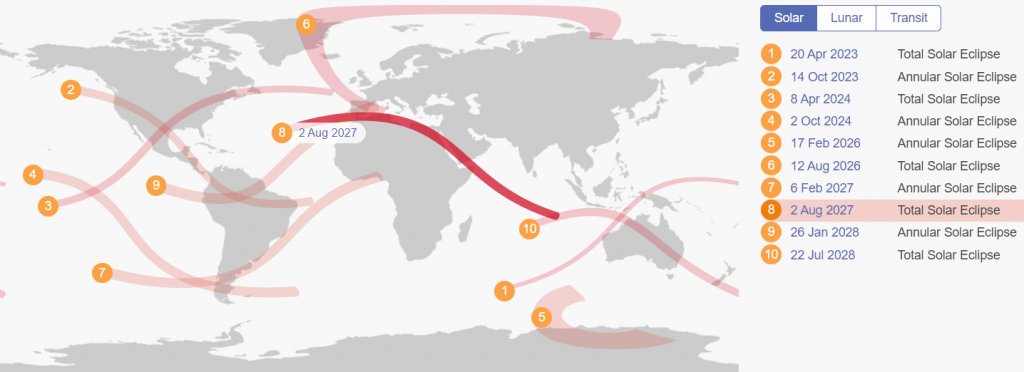
A total solar eclipse occurs when the moon passes directly between the sun and earth. It can block out the sun’s light completely and cast a dark shadow on the earth’s surface. During totality, which typically lasts a few minutes, the sky becomes dark and the stars can be seen as it is only safe to observe a total solar eclipse only during totality when the sun is completely covered. This year’s totality will be visible only for those in North West Cape, in western Australia.
After this year, the next total eclipse will be visible in North America and is set to occur on April 8, 2024. The path of totality for this eclipse will span from western Europe, North America, northern parts of South America, the Pacific, the Atlantic and the Arctic falling within its trajectory. Nepal will miss witnessing this event as well but will see one in 2027.
Partial solar eclipse
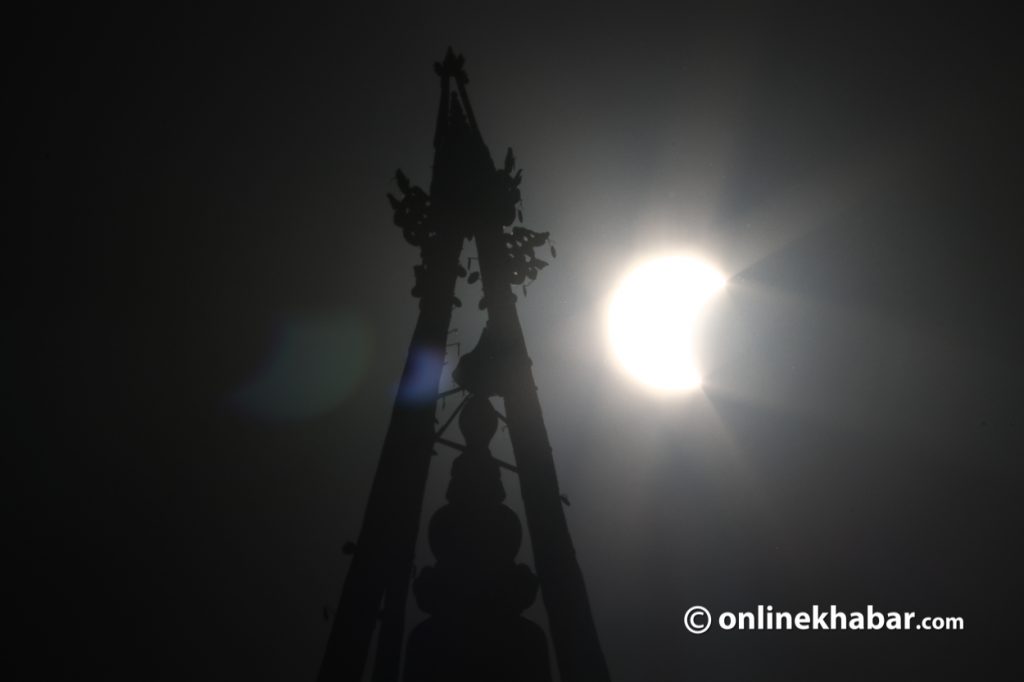
A partial solar eclipse occurs when the moon only partially blocks the sun’s light, creating a crescent shape on the sun’s disk. The amount of the sun’s disk that is covered depends on where you are observing from. Partial eclipses are more common than total eclipses and can occur several times a year in different parts of the world. The next partial solar eclipse will be on March 29, 2025, but Nepal will see one on November 3, 2032.
During a partial solar eclipse, you must use special solar viewing glasses or filters to protect your eyesight at all times. It is important to note that even though in this eclipse, the moon does not completely block the sun’s light, it can still be dangerous to look at with the naked eye. This is because the sun’s UV and infrared radiation can cause permanent damage to your eyesight.
Annular solar eclipse
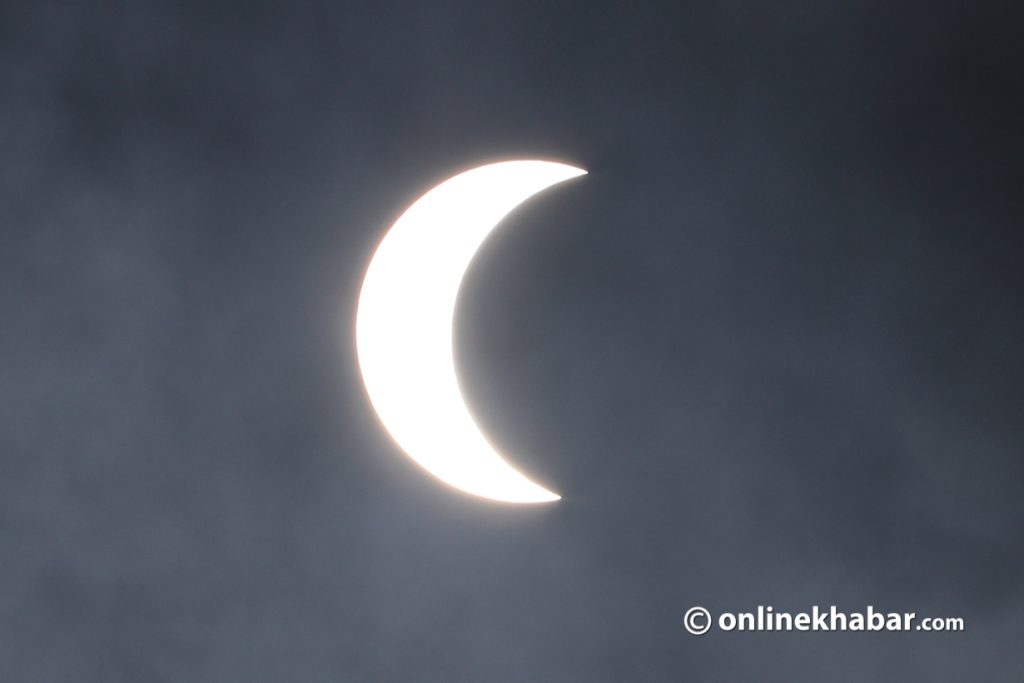
Another popular eclipse is the annular solar eclipse. This one occurs when the moon is at its farthest point from Earth and appears smaller in the sky, leaving a ring of light around the edges of the sun. This year, there is an annual eclipse in October, but Nepal will see one on June 1, 2030, only.
Annular eclipses are similar to total eclipses in that they occur along a narrow path on earth. But they are not as dramatic as it appears to pass in front of the sun but do not completely cover it, creating a breathtaking celestial display. While not as awe-inspiring as a total solar eclipse, an annular eclipse is still a remarkable event that draws astronomers and skywatchers from around the world. The path of an annular eclipse can vary greatly, and some eclipses may only be visible from certain areas of the globe.
Apart from these three, there are three other categories of eclipses as well.
Hybrid solar eclipse
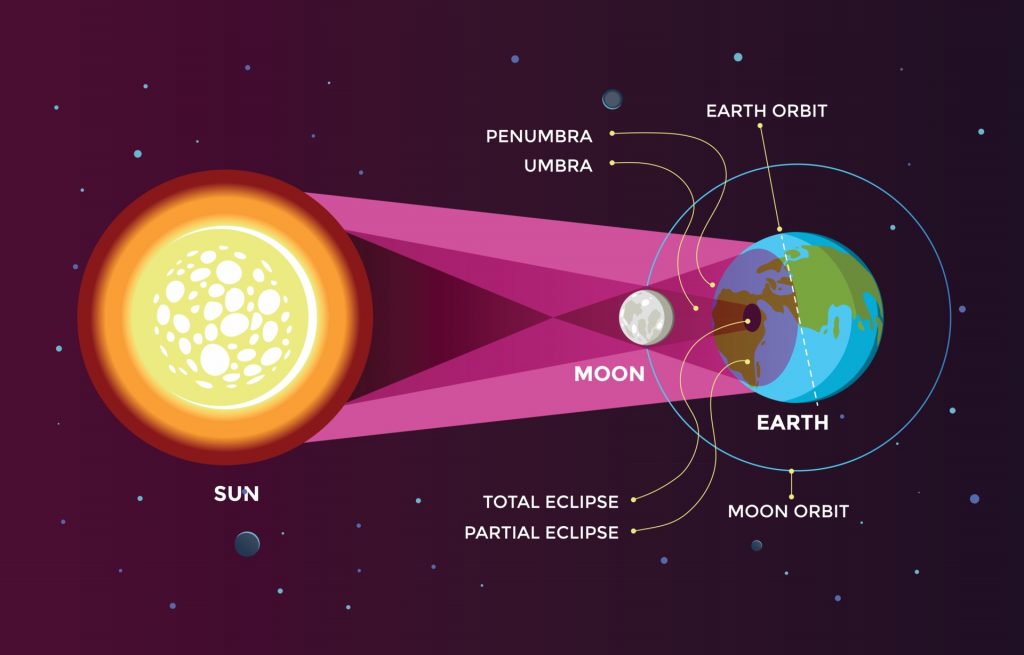
An annular-total eclipse, also known as a hybrid solar eclipse, is a rare type of eclipse that alternates between total and annular phases as it travels across the sky. The moon’s distance from the Earth and its surface’s shape contribute to this phenomenon. A hybrid eclipse only happens around a handful of times in a century, making it relatively uncommon. The one today is also a rare hybrid solar eclipse. A similar eclipse last happened in November 2013 and the next will occur in and 2031.
Viewers in specific regions may experience various eclipse varieties during this time. A total solar eclipse will be visible from a location in the middle of the eclipse path whereas an annular eclipse may be visible from the start or finish of the eclipse path. It is remarkable to observe the drastic change between the two sorts of eclipses. Due to their rarity, hybrid solar eclipses are highly anticipated by astronomers and skywatchers alike. People travel from all over the world to catch a glimpse of this amazing phenomenon. And at the moment just before and after the totality, people can also see Baily’s beads.
Partial eclipse with the diamond ring effect
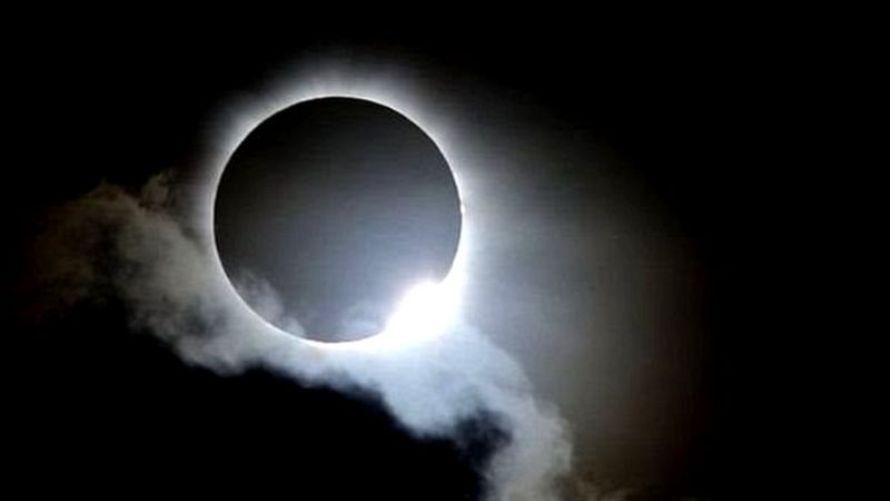
The diamond ring effect is a phenomenon that occurs during a total solar eclipse when the sun’s corona appears as a bright ring around the moon’s shadow with one bright spot resembling a diamond ring. This effect can also occur during a partial eclipse, but it is much rarer. The diamond ring effect occurs during the brief period just before or after totality when only a small portion of the sun is visible and for a very short time.
It is one of the most breathtaking sights in nature and has been observed by astronomers and eclipse enthusiasts for centuries. But whether you are an amateur astronomer or simply a curious observer, witnessing the diamond ring effect firsthand is an experience you will never forget.
Total eclipse with a black sun
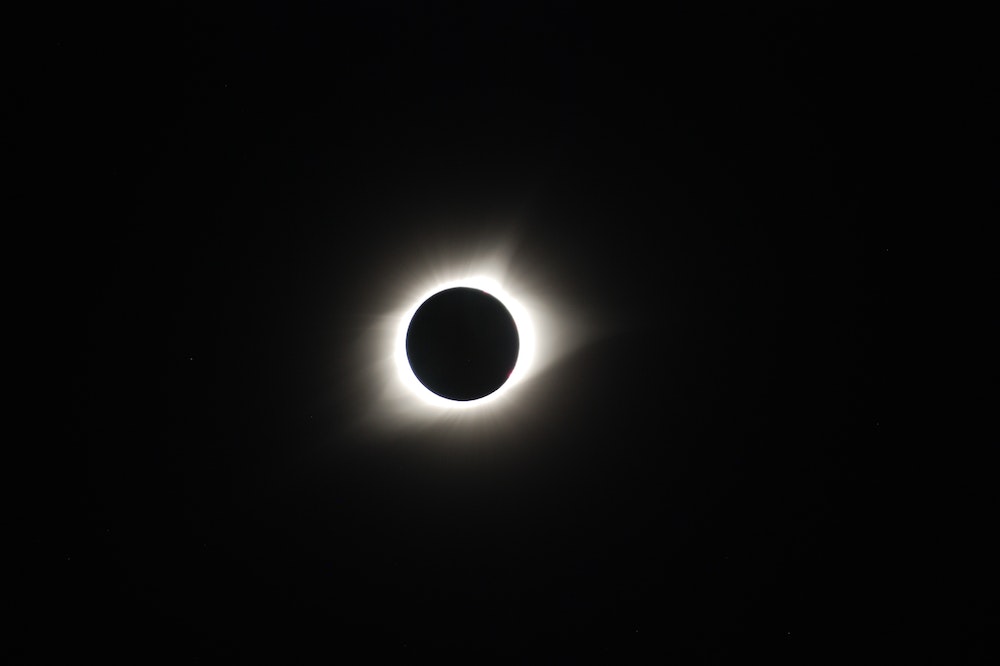
A total solar eclipse with a black sun occurs when the sun appears completely black, rather than the typical corona effect during totality. This can happen when there is a large amount of dust or ash in the atmosphere, blocking the sun’s light. The black sun effect is rare and unpredictable, but it can be observed during totality using special solar viewing glasses or filters.
The last time a total solar eclipse with a black sun occurred was in 2016, over parts of Indonesia and Micronesia. The event was witnessed by millions of people, and it was considered one of the most spectacular astronomical events of the decade. Scientists continue to study the black sun phenomenon in order to better understand the interactions between the sun and earth’s atmosphere.
Dos and don’ts during a solar eclipse
- Use special solar viewing glasses or filters to safely view the eclipse. Regular sunglasses, camera filters or other homemade filters are unsafe for looking directly at the sun. But check their condition before use. If they are scratched or damaged, do not use them.
- Use binoculars or a telescope with a solar filter to observe the eclipse. Never look at the sun through an unfiltered telescope or binoculars as this can cause permanent eye damage.
- Observe the eclipse from a safe location, away from any potential hazards such as traffic or uneven terrain.
- Be aware of weather conditions as cloudy skies can obstruct the view of the eclipse.
- Take pictures of the eclipse, but make sure to use a solar filter on your camera lens.



















